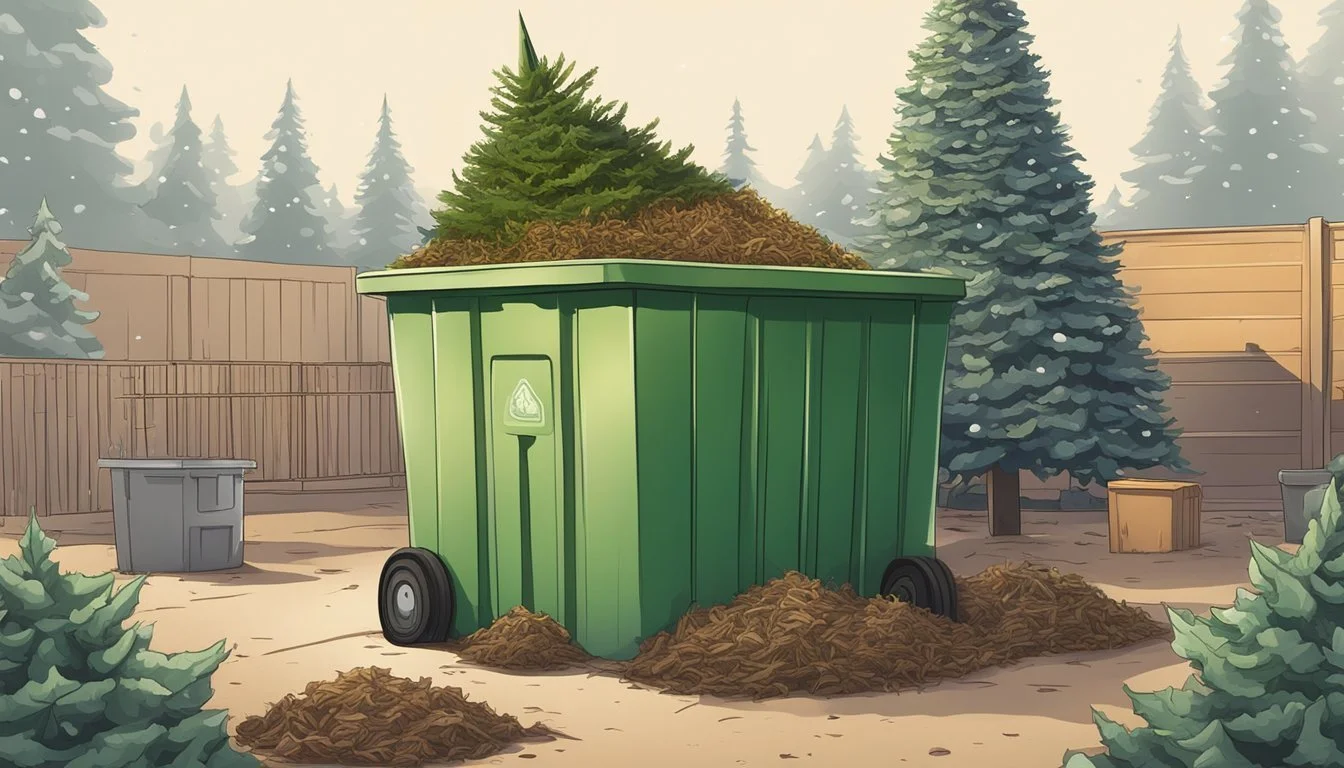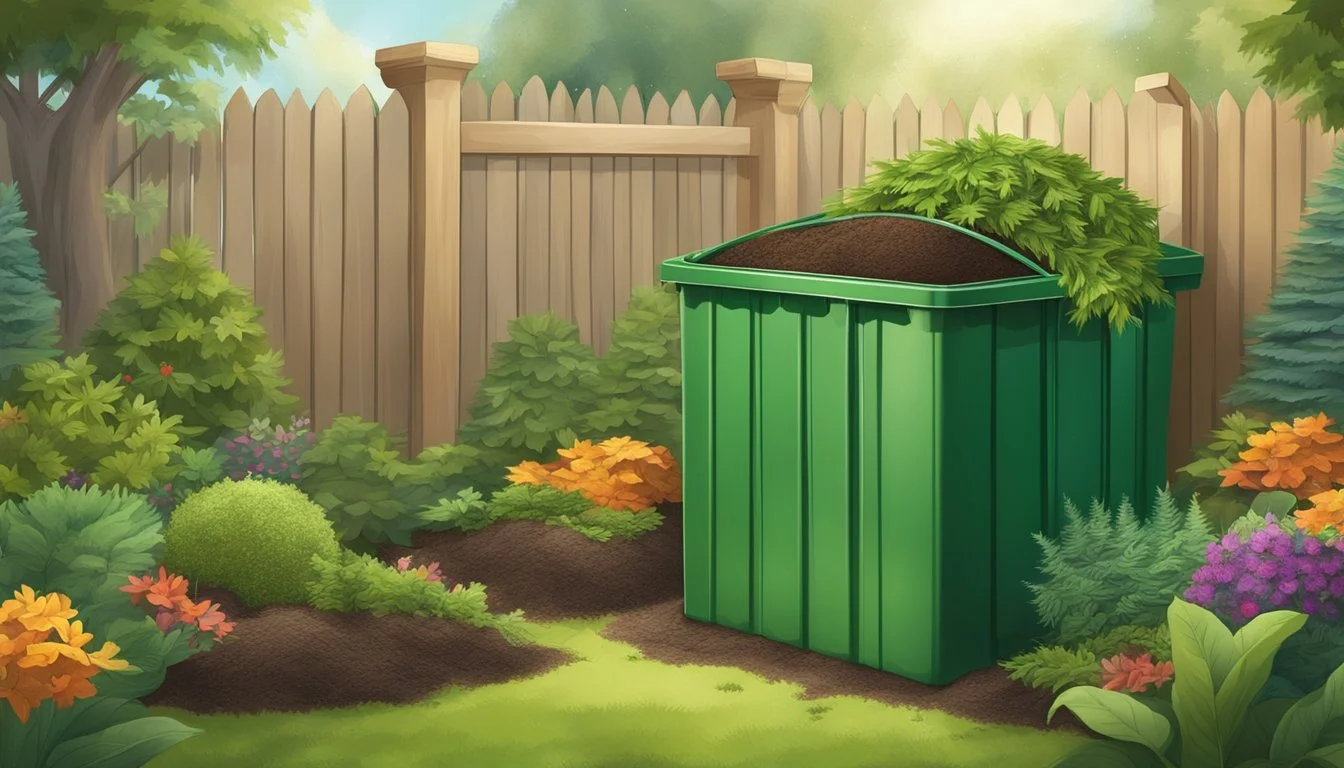Can You Compost a Christmas Tree?
Insights on Eco-Friendly Disposal
Composting a Christmas tree is a sustainable method of recycling holiday greenery once the festive season has concluded. Recognizing the necessity of responsible waste management and environmental conservation, many individuals and communities are turning to composting as a solution to repurpose their Christmas trees. Real trees can be broken down into their basic components and converted into nutrient-rich compost which can be used to nourish gardens and landscapes.
Christmas trees are inherently biodegradable, making them suitable for composting. The process involves dismantling the tree into smaller pieces, including branches and needles, to expedite the decomposition. While the entire tree is compostable, the rate of breakdown varies; the needles may decompose at a slower pace due to their tough and waxy nature. To optimize the composting process, cutting or shredding the tree to increase the surface area for microorganisms can be beneficial.
The practice of composting Christmas trees presents an opportunity to contribute positively to the environment while improving the health of garden soil. By integrating the degraded material into the compost pile, one can provide valuable nutrients that enhance plant growth. This approach not only allows for ethical disposal of seasonal waste but also promotes a cycle of renewal and growth, aligning with the principles of sustainable gardening and waste reduction.
Composting Christmas Trees
Composting Christmas trees is a sustainable way to return valuable organic material to the soil. This section will guide gardeners through the benefits of composting, the selection of suitable trees, preparation of the tree, and various composting methods.
Benefits to Your Garden
Compost made from Christmas trees enriches the soil, improving its structure, fertility, and ability to hold moisture. The addition of compost to a garden bed introduces beneficial microorganisms that help suppress plant diseases.
Choosing the Right Trees
Real Christmas trees are compostable, provided they have not been treated with harmful chemicals. It's important to ensure that only pesticide-free and organic trees are added to a compost pile to avoid contaminating the compost.
Preparing the Tree for Composting
Preparation is key to efficient composting:
Remove all decorations, including tinsel and baubles.
Use a chipper or saw to cut the tree into smaller pieces; branches should be stripped, and trunks chopped to accelerate decomposition.
Composting Methods
There are two primary methods to compost a Christmas tree:
Traditional Composting:
Layer tree pieces with other organic material, maintaining a balance of green (nitrogen-rich) and brown (carbon-rich) matter.
Regularly turn the compost pile to ensure even breakdown.
Mulching:
Shred the needles and branches to use as mulch.
This helps retain moisture and reduce weeds around plants.
Handling Tree Components
When composting a Christmas tree, separating its components is crucial for efficient decomposition. Each part has unique characteristics that affect how it should be dealt with in the composting process.
Needles and Branches
Needles, the small, sharp leaves of a Christmas tree, can be slow to break down due to their tough and resinous nature. They are better suited for mulch where their slow decomposition is an advantage in retaining soil moisture. For composting, one should remove the needles and instead focus on branches. Branches should be cut into small pieces to accelerate decomposition, as their increased surface area allows composting bacteria to work more effectively.
The Trunk
The trunk of a Christmas tree is the thickest portion and therefore, takes the longest time to decompose if left in large segments. To expedite this process, it's recommended that the trunk be chipped or shredded before being added to the compost pile. This increases the exposed surface area, thus, aiding microbial activity and hastening decomposition.
Foliage and Decorations
Before the tree is processed for composting, all decorations such as tinsel and ornaments must be removed, as they are not biodegradable and can contaminate the compost. Any additional foliage that was used to adorn the tree should also be inspected to ensure it's free from artificial materials and suitable for composting. Only organic and natural materials should be included in the compost pile to maintain the quality of the resulting compost.
Wildlife and Environmental Considerations
When composting Christmas trees, one should consider its impact on local wildlife, plant life, and overall waste reduction. Composting trees contributes to ecological well-being by creating habitats, enhancing soil quality, and diverting organic waste from landfills.
Wildlife Habitats
Christmas trees can be repurposed to benefit wildlife by providing shelter and shade. Birds often use the branches for nesting, while the tree's structure can offer refuge for small animals. Trees placed in ponds create aquatic habitats essential for fish and amphibians.
Beneficial for wildlife: Offers nests for birds and shelters for small animals
Aquatic habitats: Enhances ponds for fish and amphibian use
Sensitive Plants and Soil
Composted trees enrich the soil by adding organic matter and nutrients. These nutrients are crucial for sensitive plants that thrive on well-nourished earth. However, be cautious; using whole needles in compost can inhibit the decomposition process due to their slow breakdown.
Enriches soil: Breakdown adds nutrients critical for plant health
Consideration for needles: May need separate handling to avoid slowing composting
Reducing Waste in Landfills
Composting Christmas trees is an eco-friendly alternative to landfill disposal. It reduces the burden on landfills and minimizes methane emissions from decomposing organic material. This practice supports a more sustainable waste management approach.
Landfill impact: Lowers overall waste and associated greenhouse gas emissions
Sustainable practice: Encourages responsible organic waste handling
Alternative Uses for Christmas Trees
Christmas trees don't need to go to waste after the festive season. They can serve various beneficial roles in gardens and homes through creative repurposing strategies.
Mulching and Landscaping
Christmas trees can be a valuable resource for mulching and landscaping. The branches of a Christmas tree, when chipped or shredded, create excellent mulch that can be spread around garden beds to regulate soil temperature, retain moisture, and reduce weed growth. The needles, while slower to break down, provide an airy, acidic mulch ideal for certain plants like rhododendrons and blueberries.
Outdoor Decor and Habitat Creation
Another sustainable option is transforming the tree into outdoor decor or creating a habitat for wildlife. People can prop their Christmas tree in their yards to serve as a bird feeder station by hanging suitably filled pinecones or strung popcorn. Moreover, submerged in a pond, the tree can provide a valuable fish habitat offering shelter and areas for fish to lay eggs.
Crafts and Other Creative Reuses
The wood and branches of Christmas trees hold great potential for crafts and other creative projects. The trunk can be cut into coasters or candle holders, and the smaller branches might be fashioned into decorative wreaths or even walking sticks. These creative reuses not only extend the life of the tree but also add a personal touch to home decor.
Practical Tips for Tree Disposal
After the festive season, disposing of a Christmas tree responsibly ensures environmental benefits such as recycling and waste reduction. This section provides specific guidelines to make the disposal process safe and efficient.
Safety and Precautions
Before disposing of a Christmas tree, removing all decorations, tinsel, and lights is crucial to avoid potential hazards. Dry trees pose a significant fire risk, especially if left inside the home for an extended period or placed near heat sources. Individuals should never burn a Christmas tree indoors in a fireplace or wood stove, as the sap can cause a fire to flare uncontrollably.
Curbside Pickup and Local Programs
Many municipalities offer curbside pickup services post-Christmas for tree disposal. Residents should consult their local waste management schedule and guidelines, as trees often need to be placed on the curb without plastic bags. Local parks and recycling centers may provide drop-off sites for trees, where they are then chipped into mulch or used for composting.
Curbside Pickup: Check local schedules; prepare trees as instructed.
Drop-off Locations: Often available at parks and recycling centers.
Breaking Down and Transportation
If transporting the tree to a recycling center or compost site, breaking it down into smaller sections may be necessary. Using a saw, one can cut the tree into manageable pieces. Needles can be removed and scattered over garden beds as a form of light mulch. For transportation, a tarp or bed liner can help contain needles and provide an easy way to unload the tree upon arrival.
Cutting the Tree: Cut into smaller pieces if needed for transport.
Transportation Method: Use a tarp to contain debris.
Recycling Christmas Trees
Recycling Christmas trees is not only eco-friendly but also beneficial for gardens and local communities. These trees can be repurposed in various ways, from soil enrichment to public use.
Tree Recycling Programs
Many municipalities offer tree recycling programs after the holiday season. Residents can drop off their undecorated, real Christmas trees at designated locations. These programs typically chip and shred the trees to be used as mulch for landscaping, creating a sustainable way to avoid sending them to landfills.
Creating Pathways and Barriers
Homeowners can use the branches and trunks of Christmas trees to make pathways in their gardens or as soil erosion barriers. By cutting branches into smaller pieces, they effectively keep soil in place and help control moisture levels, contributing to a healthier garden atmosphere.
Contribution to Public Spaces
Christmas trees can significantly contribute to public spaces like parks. Shredded trees serve as a nutritious base for compost that enhances the quality of soil in these areas. Moreover, additional trees are sometimes placed in strategic locations within parks to provide shelter and habitats for wildlife, contributing to local ecology.
By participating in or initiating tree recycling efforts, individuals and communities actively support environmental health and resource conservation.
Maximizing Garden Health
A Christmas tree, once its festive duty is done, can be an excellent resource for a garden. It provides organic material that can serve as fertilizer, enhance soil quality, and offer winter protection for plants.
Using Trees as Fertilizer
When a Christmas tree is composted, it transforms into nutrient-rich fertilizer for the garden. Small branches and twigs can be cut into chunks to accelerate decomposition, while avoiding the needles helps prevent a slowdown in the composting process. This resulting compost contributes essential nutrients that assist in the growth and health of garden plants.
Improving Soil Drainage and Structure
By adding composted Christmas tree material to the garden soil, one can improve soil drainage and structure. Decomposed wood from the tree aids in creating a looser soil structure, which allows for better water penetration and aeration, key factors in the health of root systems.
Winter Insulation for Plants
The needles of the Christmas tree, although slow to decompose, make excellent mulch that can help with insulation. Mulch acts as a barrier, protecting the soil from extreme temperature fluctuations and frost, which is crucial during the cold-weather months. It also facilitates water movement through the soil, ensuring that plant roots do not succumb to rot in wet conditions.



